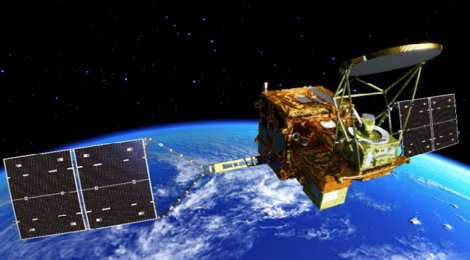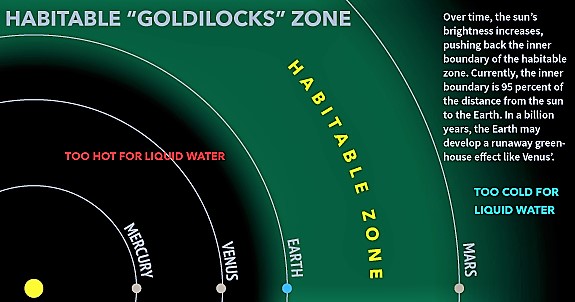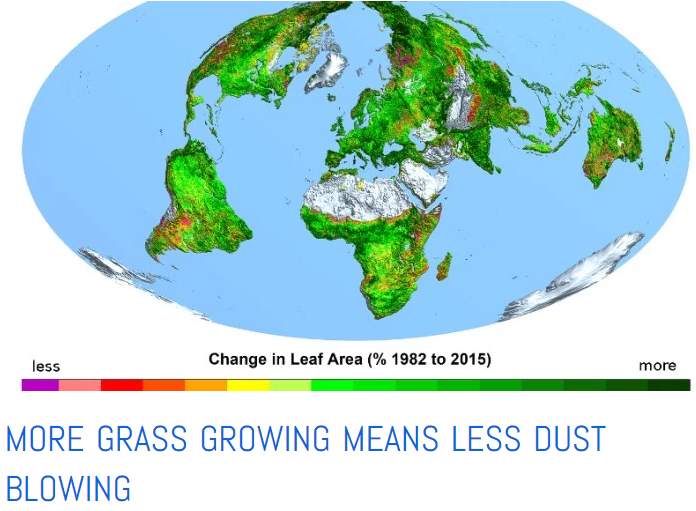
Aqua Satellite View/Video Of Iron Stressed Ocean Pastures
Researchers have conducted the first global analysis of the health and productivity of ocean plants using a unique signal detected by NASA’s Aqua satellite.
The results and prognosis are scary.
But there is a prescription that is very likely to be able to bring them back to good health if they receive it soon.
Ocean scientists are now able to remotely measure the amount of fluorescent red light emitted by phytoplankton. This reveals how efficiently these microscopic plants turn sunlight and nutrients into food through photosynthesis. That’s in turn is equal to a measure of their health.
These global health instruments are equal to the best medical lab instruments in any world-class doctors clinic. The instruments allow doctors examining a very important patient, Mother Nature, to see precisely how changes in the global ocean environment are affecting the nexus of life on this blue planet – its ocean plant life.

Earth is almost inside of our Goldilocks Zone, far too close to Venus where the temperature is that of molten lead. Without the plankton cooling clouds we’d all be cooked! – click to enlarge
Phytoplankton are without question the most powerful force of nature on their blue world. They dominate nearly all ocean ecosystems, serving as the most basic food source for fish, seabirds, and marine life of all kinds. Phytoplankton account for more than half of all photosynthetic activity on Earth and play a key role in the now out of balance carbon dioxide and oxygen in the atmosphere.
Each year they scrub ~100 billion tonnes of CO2 from the air repurposing that CO2 into new ocean life. They also are the source of the majority of clouds that shade theirs and our planet from the deadly heat of the Sun, without them Earth would be more like the scorching temperature of Venus.
Fortunately our Earthly health monitoring instruments are there to help
“This is the first direct measurement of the health of the phytoplankton in the ocean,” said Michael Behrenfeld, a biologist who specializes in marine plants at Oregon State University. “We have an important new tool for observing changes in phytoplankton every week, all over the planet.”
Watch Prof. Michael Behrenfeld’s Video (see more of his vids on YouTube)
All plants absorb energy from the sun, typically more than they can consume through photosynthesis. A small fraction of this extra energy is re-emitted as fluorescent light in red wavelengths.
Using the Moderate Resolution Imaging Spectroradiometer (MODIS) on NASA’s Aqua satellite, scientists have now observed “red-light fluorescence” over the open ocean. MODIS is the first orbiting instrument to observe this signal on a continuous global scale.
“The amount of fluorescent light emitted is not constant; it changes with the health of the plant life in the ocean,” said Behrenfeld.
Scientists previously used satellite sensors to track the amount of plant life in the ocean by measuring the amount and distribution of chlorophyll.
“Chlorophyll gives us a picture of how much phytoplankton is present,” said co-author Scott Doney, a marine chemist from the Woods Hole Oceanographic Institution in Woods Hole, Mass. “Fluorescence provides insight into how well they are functioning in the ecosystem.”
Unexpected Bad News
Aqua and its state of the art instruments have sent down data that is not good news. The data shows large areas of the Indian Ocean where phytoplankton are in trouble suffering from deadly anemia as they are under stress from chronic iron deficiency.

Global greening due to high and rising CO2 has dramatically reduced the amount of vital mineral dust reaching distant ocean pastures leading to deadly ocean anemia. – click to read more
The boffins were surprised to see large portions of the ocean “light up” seasonally as phytoplankton responded to a lack of iron in their diet. The amount of fluorescence increases when phytoplankton have too little iron, a nutrient in seawater. Iron normally reaches the sea surface on winds blowing dust from deserts and other arid areas, and from upwelling currents.
The research team detected new regions of the ocean afflicted by lack of dust and iron depletion. In the fall and winter and especially the summer, significant southwesterly winds over the Indian Ocean stir up ocean currents and bring more nutrients up from the depths for the phytoplankton to feed on. At the same time, the amount of iron-rich dust delivered by winds is reduced.
Ocean warming which drives global warming and climate change will also mean changes in the winds that pick up vital dust and blow it to the sea. Some regions will become drier and others wetter, changing the regions where dusty soils accumulate and get swept up into the air. Phytoplankton will reflect and react to these global changes.
“On time-scales of weeks to months, we can use this data to track plankton responses to iron inputs from dust storms and the transport of iron-rich water from islands and continents,” Doney said. “Over years to decades, we also can detect long-term trends in climate change and other human perturbations to the ocean.”
Prescription
We can and must provide Mother Nature with the effective low cost generic prescription medication to cure her anemia before her condition worsens dramatically. Read everywhere on this blog about how our work to do just that is proving to a fantastic success. Though much more needs to be done. Join me.
These findings appeared in the May edition of the journal Biogeosciences.








